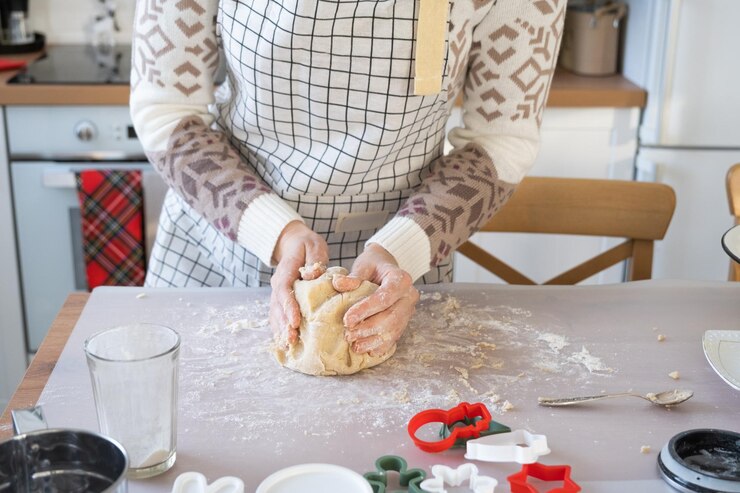There’s something truly magical about homemade pasta. The way the dough comes together under your hands, transforming simple ingredients into a delightful dish, is an experience that any home cook can cherish. Among the many types of pasta, tortellini holds a special place in the hearts and kitchens of food lovers worldwide. With its charming ring shape and delicious fillings, this little parcel of joy invites creativity and tradition to every meal.
But what if you could elevate your tortellini game even further? Enter the Tortellinatrice—a fantastic tool designed specifically for crafting perfect tortellini at home. Whether you’re a seasoned chef or just starting on your culinary journey, mastering this technique will open up new possibilities in your kitchen. Get ready to roll up those sleeves and dive into the art of making fresh tortellini like never before!
The History of Tortellini
Tortellini’s origins are steeped in legend and culinary tradition. Believed to have emerged from the Emilia-Romagna region of Italy, these delightful pasta pockets date back to the early 15th century.
One popular tale suggests that tortellini was inspired by Venus herself. A curious innkeeper observed her beauty and attempted to replicate it in his cooking, resulting in the creation of this iconic shape.
Traditionally filled with a mixture of meats or cheese, tortellini quickly became a staple during festive occasions and family gatherings. The handmade process embodies generations of Italian craftsmanship.
As recipes evolved over time, various regions adopted their own twists on fillings and sauces, showcasing local ingredients. From rich broths to creamy sauces, how you enjoy your tortellini often tells a story about its roots.
Today, tortellini is celebrated worldwide for its unique flavor and cultural significance—making it a timeless dish loved by many.
Equipment and Ingredients Needed for Tortellinatrice
To create delicious tortellini, having the right equipment is essential. A high-quality tortellinatrice is your best friend in this culinary endeavor. This handy tool helps you shape and seal your pasta effortlessly.
You’ll also need a clean work surface for rolling out the dough. A sturdy rolling pin will help achieve that perfect thinness, ensuring your pasta cooks evenly.
As for ingredients, start with all-purpose flour or semolina. These provide the perfect base for tender yet firm pasta. Don’t forget fresh eggs; they add richness and flavor to your dough.
Seasoning matters too—just a pinch of salt enhances everything beautifully. For fillings, consider ricotta cheese, spinach, or classic meats like prosciutto and sausage to elevate your creations delightfully.
Gather these essentials before diving into homemade tortellini-making bliss!
Step-by-Step Guide to Making Homemade Tortellini
Start with the dough. Mix flour and eggs until a smooth consistency forms. Knead it for about 10 minutes, then wrap in plastic and let it rest.
Roll out the dough thinly using a pasta machine or rolling pin. Aim for sheets that are almost translucent; this ensures delicate tortellini.
Cut circles from the rolled-out dough using a round cutter or glass. Each circle should be around three inches in diameter.
Prepare your filling of choice—ricotta and spinach is popular but feel free to get creative! Place a small spoonful in the center of each circle.
Moisten the edges of the dough with water, fold over to create half-moons, and pinch to seal tightly. Bring both ends together to form rings, ensuring no air pockets remain inside.
Repeat until all dough is used up, then prepare them for cooking or freezing as desired.
Tips and Techniques for Perfecting Your Technique
Practice makes perfect. Start with small batches of dough to build your confidence. Once you’re comfortable, scale up.
Work in a cool environment. Heat can dry out the pasta quickly, making it difficult to work with later on. Keep everything chilled—your tools, ingredients, and even your hands if possible.
Don’t rush the rolling process. Take your time to achieve that delicate thinness; this is where flavor and texture come together beautifully.
Use plenty of flour while rolling out the dough to prevent sticking. A light dusting helps ensure smooth movement through any machine or by hand.
Pay attention to sealing edges when filling each piece of tortellini. A good seal prevents leaks during cooking and keeps fillings intact for maximum enjoyment.
Experiment with different shapes as you gain confidence in folding techniques; variety adds excitement both visually and texturally!
Creative Filling Ideas for Tortellini
When it comes to tortellini, the filling possibilities are endless. Go beyond traditional meat or cheese and explore unexpected combinations.
Consider a blend of roasted butternut squash with ricotta and sage for a sweet yet savory bite. This combination brings warmth and comfort to your dish.
For a taste of the sea, try shrimp mixed with cream cheese, garlic, and lemon zest. The briny notes will elevate any sauce you choose.
If you’re feeling adventurous, experiment with wild mushrooms sautéed in thyme paired with mascarpone. This earthy filling adds depth while maintaining that creamy texture everyone loves.
Don’t forget about dessert! A chocolate hazelnut spread encased in pasta is delightful when served sweetened cream or fresh berries on the side.
Each creative filling transforms your homemade tortellini into an extraordinary meal worth savoring at every bite.
Pairing Homemade Tortellini with Sauces and Wines
Homemade tortellini deserves a sauce that complements its delicate flavors. A classic choice is sage brown butter. The nutty aroma and rich texture elevate the pasta, creating a harmonious dish.
For something lighter, consider a fresh tomato sauce with basil. This combination brings out the freshness of your ingredients while adding brightness to each bite.
Wines are equally important in this pairing journey. A light Pinot Grigio works beautifully with cheese-filled tortellini, enhancing the creamy textures without overpowering them.
If you opt for meaty fillings, try a medium-bodied Chianti or Sangiovese. These reds have enough structure to stand up to robust flavors while providing an exquisite balance on the palate.
Experimenting with different sauces and wines can transform your homemade tortellini into an unforgettable meal that delights every guest at your table.
Alternative Uses for a Tortellinatrice
A Tortellinatrice isn’t just for making tortellini. This versatile kitchen tool can elevate your pasta game in many ways.
Use it to create other stuffed pasta types like ravioli or agnolotti. Simply adjust the filling and shape them with ease.
You can also craft dumplings from various cuisines, such as Chinese jiaozi or Polish pierogi. The possibilities are endless when you unleash your creativity.
Don’t stop at savory dishes! Try using the Tortellinatrice for dessert pastas filled with sweet ingredients like chocolate or ricotta mixed with fruit.
Consider transforming leftover dough into stylish cookies too. Shape and cut them out for a fun twist on classic treats.
Experimenting will keep your meals fresh and exciting, making every cooking session an adventure rather than a chore. Embrace the versatility of this handy gadget; it may quickly become one of your favorite kitchen companions.
Troubleshooting Common Issues
Making tortellini can be a delightful experience, but sometimes things don’t go as planned. If your pasta dough is too dry, try adding a splash of water or an extra egg to bring it back to life. Kneading properly will help achieve that perfect texture.
If the filling keeps spilling out during cooking, you might not have sealed them tightly enough. Ensure each piece is pinched securely before boiling.
Another common issue arises when the tortellini stick together after boiling. To prevent this, toss them gently in olive oil right after draining.
If you find your shape isn’t quite right, practice makes perfect! Each attempt sharpens your skills and builds confidence in crafting these delicious little parcels of joy.
Conclusion
Homemade pasta brings a sense of warmth and creativity to the kitchen. The tortellinatrice is more than just a tool; it’s an invitation to explore culinary traditions and experiment with flavors. By mastering the art of making tortellini, you connect with generations past while creating something uniquely yours.
Whether you’re filling your pasta with classic ingredients or daring combinations, each bite tells a story. Pairing your creations with exquisite sauces and wines can elevate your meal into an unforgettable experience.
As you navigate through potential hiccups in your cooking process, remember that practice makes perfect. Each attempt teaches something new. With every batch, you’ll refine your technique and expand your palate.
Embrace this journey of homemade pasta-making using the tortellinatrice. It’s not just about food; it’s about crafting memories around shared meals and joyful moments in the kitchen. Happy cooking!

